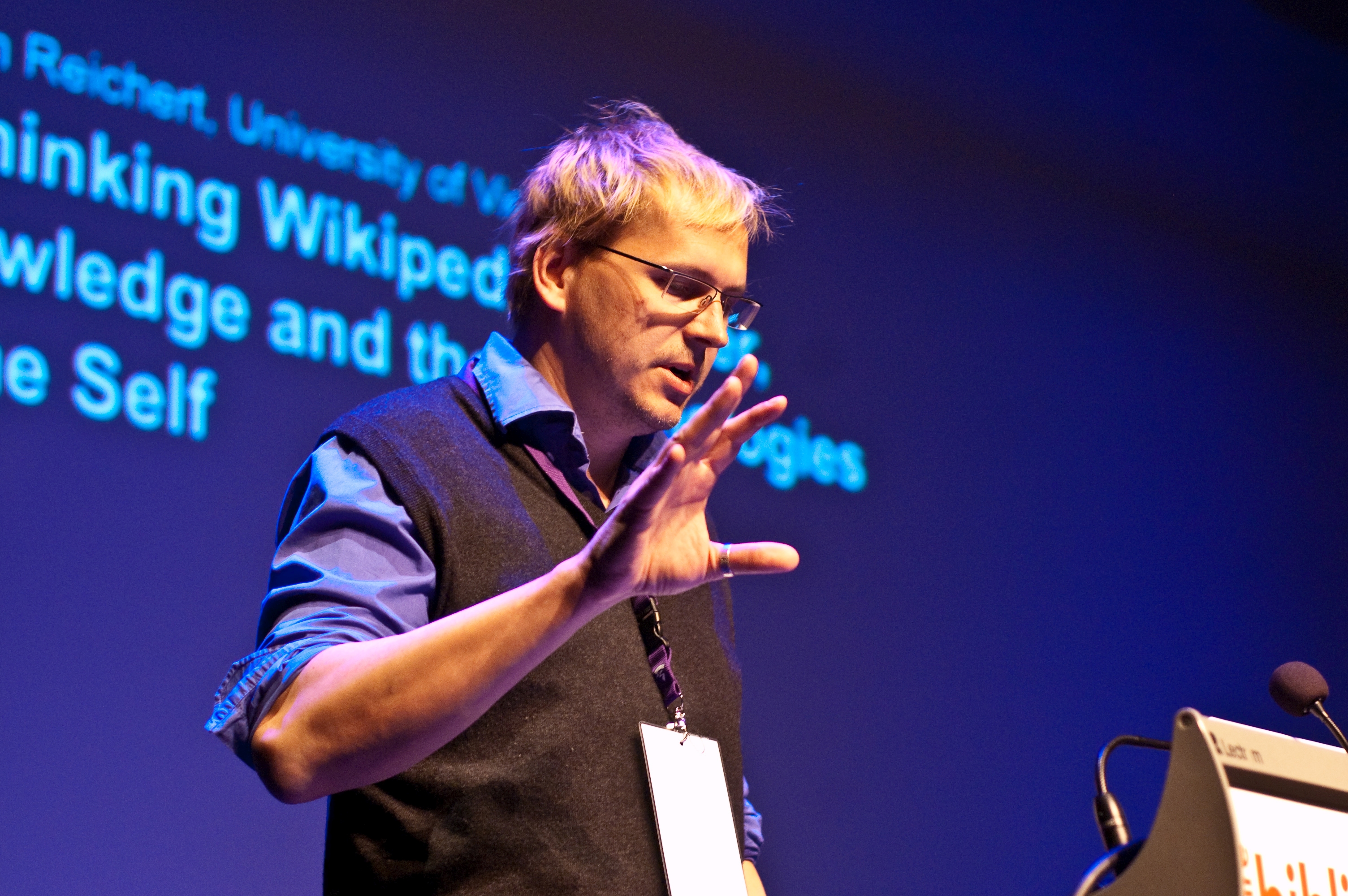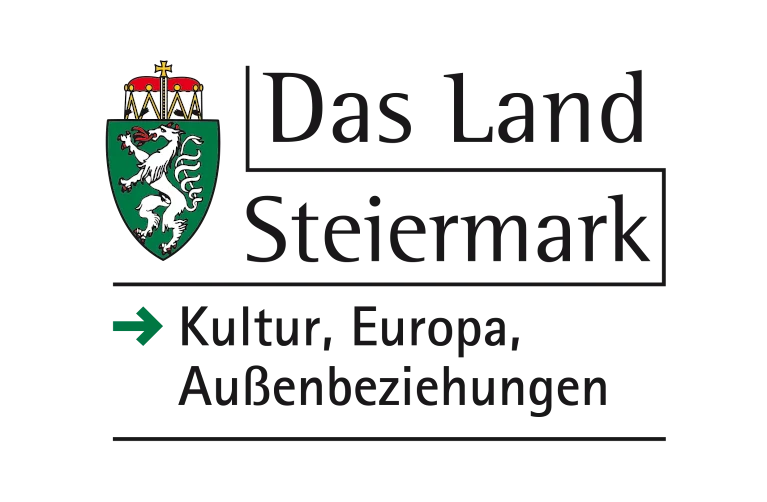Published January 20th, 2025
Interview
by Gelavizh Abolhassani
Ramón Reichert, born in 1966, is a senior researcher in the Department of Cultural Studies at the University of Applied Arts Vienna, where he also teaches. Previously, he held academic positions at institutions across Basel, Berlin, Canberra, Fribourg, Helsinki, Sankt Gallen, Stockholm, and Zurich. In his work, he especially focuses on the connection between politics, art, and the media. He is also the editor in chief of the international journal Digital Culture and Society.
Gelavizh Abolhassni: You are part of a cultural studies group, and your research and published projects focus specifically on digital society, social media, visual culture, and critical considerations of current events, including the war between Russia and Ukraine, as well as the “Women, Life, Freedom” Movement in Iran. Can you tell us more about your work in these areas and the themes that guide your research?
Ramón Reichert: In both cases, digital media plays a crucial role in the production of public opinions, political mobilization or the stabilization of power and rule. Digital media have characteristic features that other media do not have, because they can directly forward content to individual users, the content spreads globally and can very quickly produce opinions that can be useful to the respective broadcasters. Digital network media can be dangerous for those in power because political content can be disseminated unfiltered. Therefore, digital media themselves are targets of political influence, censorship, and bans.
Abolhassni: As a bilingual doctor and senior philosophy researcher working not only in Austria but also engaging with diverse linguistic and cultural contexts, how do you perceive the relationship between politics and art in the media?
Reichert: Digital media and online platforms have significantly changed politics over the last two decades. The characteristics of contemporary media have also changed the relationship between art and politics. Art on messenger apps and online platforms can become influential if it can generate attention. Art practices adapt this economy of attention and change. Video works are becoming shorter and adapting online viewing habits in order to be noticed. Memes have become a new art form that corresponds to this trend.
Abolhassni: How do you perceive the impact of new-generation media and virtual spaces on visual culture compared to traditional media?
Reichert: The everyday cultural relevance of media can be demonstrated in different ways. In order to measure the social importance of media, media can be specified according to their distribution density, accessibility, user-friendliness, and their embedding in social, economic, and legal conditions. The high density of digital networking media and the economization of sharing in the sharing economy have significantly changed the importance and handling of image-based content on the Internet. The rise of social media — Facebook (2004), YouTube (2005), Twitter (2006) and Instagram (2010) — was accompanied by visions of participatory, domination-free networking.
Today we are in a post-participatory phase of change and can observe the development of professionalization tendencies and class structures on community portals. Internet-based societies have significantly changed the traditional forms of writing and reading in book culture in the everyday use of the digitally networked media of peer-to-peer networks (P2P). However, these new cultural techniques of social media not only affect the content shared, but also the way in which the audiovisual or text-based content is constructed in the media and to what extent it creates forms of social participation that clearly differ from the classic mass media.
Abolhassni: In what ways have social media platforms like Instagram created open spaces for presenting works of art on a global scale, and how can they shape or lead social movements?
Reichert: Online platforms and messenger services are becoming increasingly popular among young people and today represent the dominant distribution, production, and reception medium for everyday communication in youth culture. With a dominant market position of Instagram, a new influence has emerged in everyday culture. Medialization has emerged, offering “all-in-one media” for digital natives, forming a new “operating system” for Internet users and creating a closed use of “walled gardens” in order to create long-term relationships between the network platform provider and the profile owner.

Abolhassni: How does the digital world provide artists with the freedom of expression to convey their critical and non-critical views through art, and how might this manifest differently across various regions of the world? Can you provide specific examples or case studies that illustrate how digital freedom of expression varies globally?
Reichert: I would like to confront the question with a case study. Iran is one of the countries in the world where the Internet has experienced one of the fastest growth rates since its launch in 1993. Since then, a diverse blogging sphere and broad social media use have developed in Iran, which promotes and strengthens Iranian social structures, economic developments, and political processes. Iran is also one of the few countries in the world that confronts online media with a systematic censorship mechanism. On the other hand, the Iranian population uses numerous methods to gain access to the prohibited websites and services. According to an official report, around 10 to 12 million users bypass the filtering regime by using VPN only:
A new survey shows that almost 40% of users in Iran were still active on Telegram in July 2021, up from 62% before this platform was permanently banned. Circumventing the filter regime is not frowned upon by society, since in addition to ordinary people, many high-ranking officials such as the Supreme Leader Office, the President, government ministers and MPs are publicly active on blocked social media such as Twitter. (Hashemzadegan & Gholami 2022)
Abolhassni: To what extent can social media create a space of liberation for art and artists, and in what ways might it also contribute to the exploitation of visual communication and artists?
Reichert: In authoritarian states that exercise massive media censorship, social media are considered freedom technologies. Digital media open up communication spaces that are organized on an equal, collaborative, and participatory basis. Opinions can be contradicted here, there is no communication from top to bottom, but rather a discourse that can withstand contradictions, ambivalences, and disagreements.
Abolhassni: Does visual culture in digital communication, particularly on platforms like Instagram, have the ability to document history? Could you provide specific examples of how significant historical events have been documented through visual media on Instagram, and what impact this has on public memory and historical narratives?
Reichert: I would like to answer this question against the background of Russia's full-scale attack on Ukraine. For Ukrainians, online platforms, messenger apps, and social media are acting as digital archives of military violence. Smartphone technology has led to the multiplication of observation orders. A new era of military intelligence, archiving, and mutual reconnaissance has emerged: The app communicates the latest military developments, disseminates air raid warnings, documents war crimes, forwards satellite images for possible targets or lists maps of local air raid shelters. The war in Ukraine is the best documented modern military conflict to date, raising several questions and challenges. The era of smartphones has established the ubiquity of eyewitness testimony. In contrast to traditional war reporting, the content can be transmitted unfiltered and in real time. Anyone can feed these images to the public instantaneously, without editorial supervision and discursive contextualization. A non-centralized digital archive has emerged on online platforms and websites, supported by the Ukrainian civilian population.
The practices of “witnessing war” disseminated on the internet are plenty and diverse. They document destruction and violence on the ground, but they also contain testimonies that are collected on websites, messaging services, social network sites, and video platforms. The resulting online archives collect photographs, videos, and text-based documents and are not only used by those affected to share their experiences, but also by academics, human rights activists, NGOs, lawyers, and public prosecutors to initiate war crimes trials later. Methods of ethnography, interview research and research of witness literature are being applied to process the various contents; the more eyewitness documents that substantiate a case, the more reliable the existing sources appear.
Abolhassni: How has your experience as a non-native English speaker influenced your research or academic career?
Reichert: As a young scientist, I had hardly any contact with the international scene in non-German-speaking countries. Only with the implementation of digital communication media on the Internet has internationalization of scientific exchange occurred. That didn't happen before. Today it has become very easy to network and exchange ideas internationally. In my generation, we still wrote letters and rarely went to international conferences.
This interview has been edited and shortened for clarity and conciseness.
Esfandiari, Golnaz (2022). Iran Accused of Secretly Implementing Controversial Draft Internet Bill, in: Radio Free Europe/Radio Liberty, 9 September 2022. Retrieved from https://www.rferl.org/a/iran-internet-bill-controversy-secretly-implementing/32026313.html.
Grinko, Margarita, Qalandar, Sarvin, Randall, Dave, Wulf, Volker (2022). Nationalizing the Internet to Break a Protest Movement: Internet Shutdown and Counter-Appropriation in Iran of Late 2019, in: Proceedings of the ACM on Human-Computer Interaction, 6, H. CSCW2, pp. 1-21.
Hashemzadegan, Alireza, Gholami, Ali (2022). Internet Censorship in Iran: An Inside Look, in: Journal of Cyberspace Studies, 6(2), pp. 183-204.
Rouhi, Mahsa (2022). Woman, Life, Freedom in Iran, in: Survival: Global Politics & Strategy, 64(6), pp. 189-196.
Ziabari, Kourosh (2022). Iran’s Leaders Are Scared of the Internet, in: Foreign Policy, 6 June 2022. Retrieved from https://foreignpolicy.com/2022/06/06/iran-internet-protection-bill-curbs-restrictions-unrest.
Nationality: Iranian
First Language(s): Farsi
Second Language(s):
Turkish,
English,
German
Supported by:

